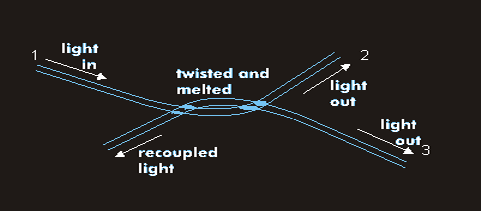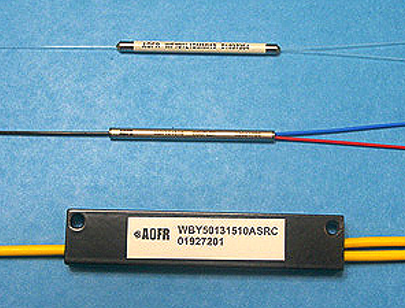taper coupler
The biconical taper coupler (bi-taper) is a simple optocoupler used in the early years of optical networks. In principle, it is two optical fibers wound around each other with a few turns and fused.
In the case of the taper coupler, the glass fibers twisted against each other are heated almost to the melting temperature and stretched a little. This process produces fibers that are tapered and re-expanded. The taper of the core diameter creates the taper function, which converts flat modes into steep modes and increases the numerical aperture.
A mode exchange takes place between the two fibers. If the twisted section has a certain length, a coupler with wave-separating properties is obtained. The method can also be used for star couplers with more than two fibers.
In the biconical taper coupler, the wavelengths coupled together had to be widely spaced. That's why they used wavelengths of 1,310 nm and 1,550 nm and had twice the bandwidth of a single optical fiber, or 5 Gbps.


